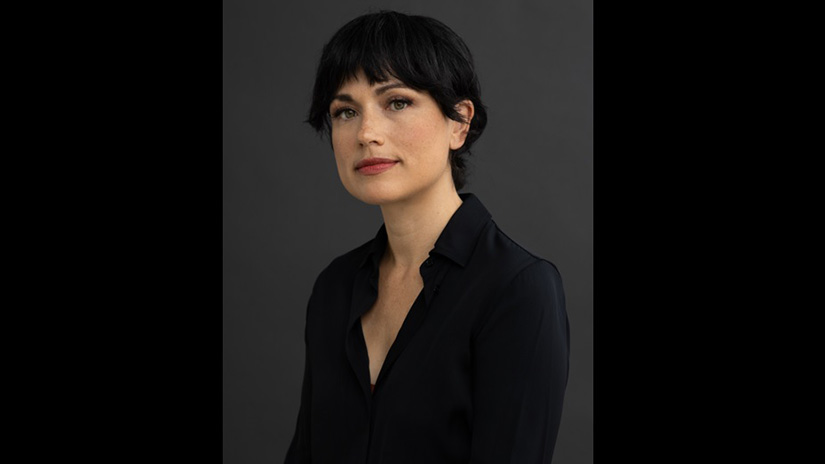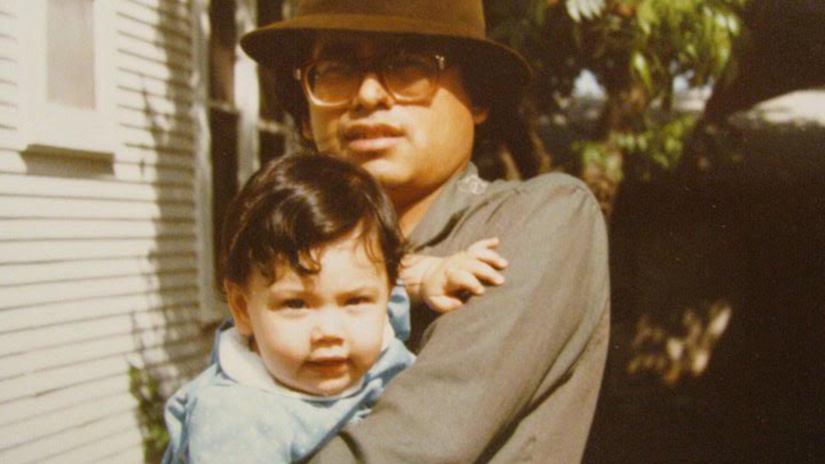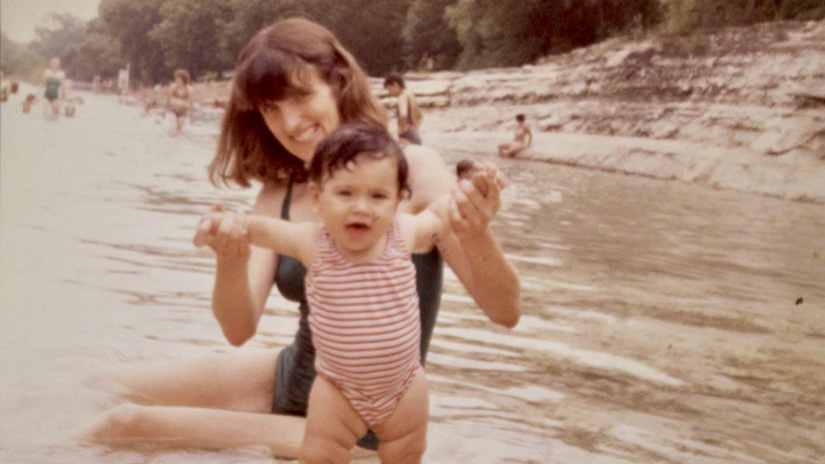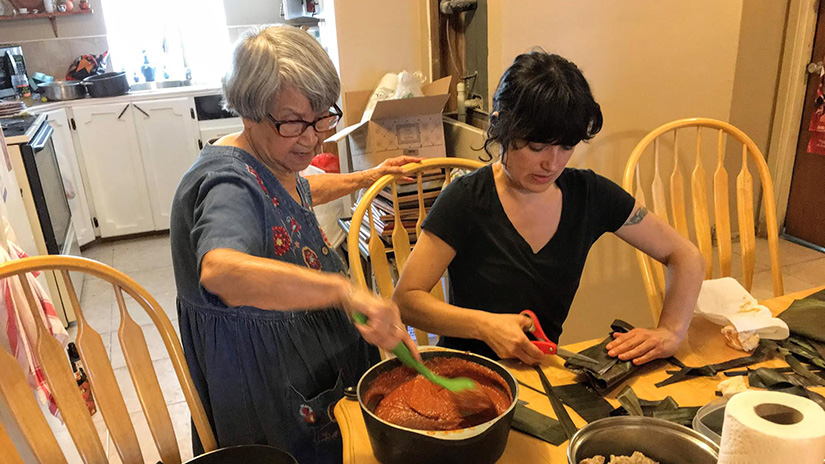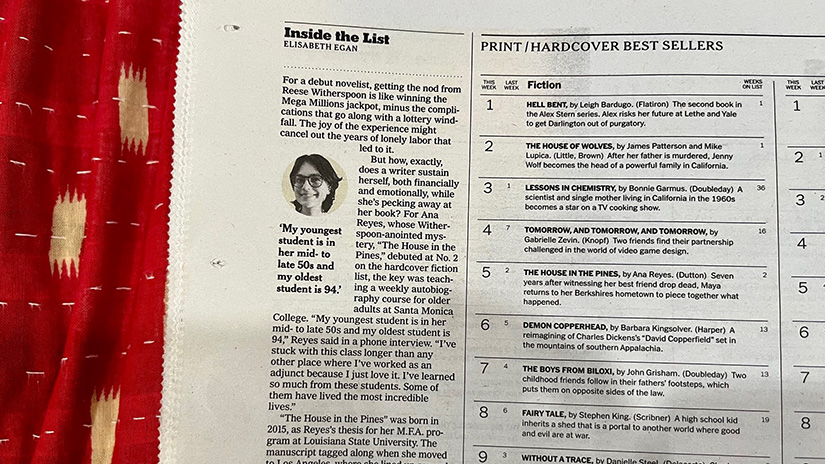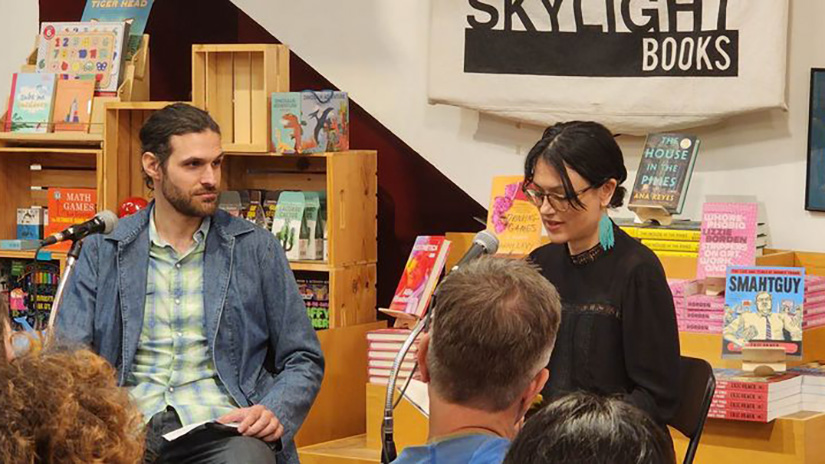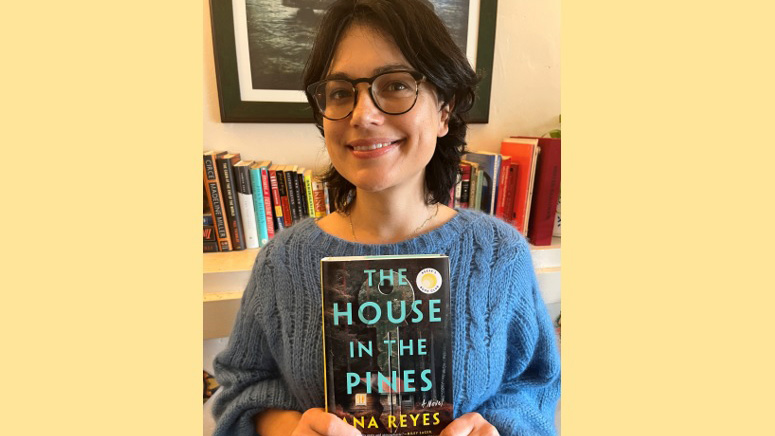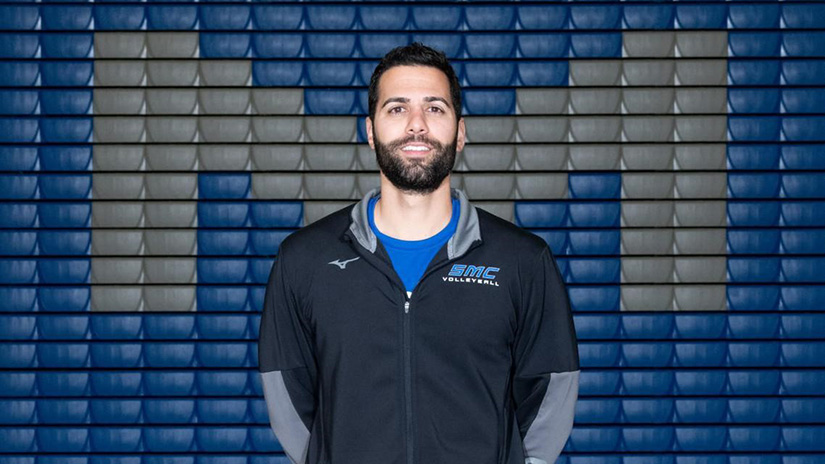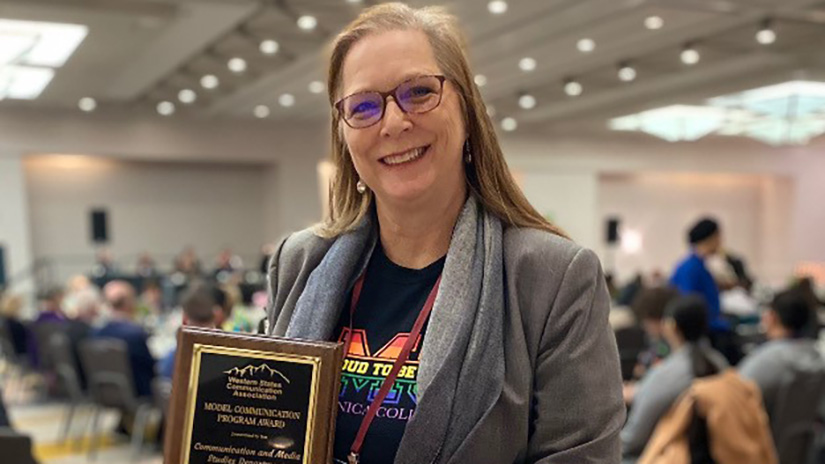
If you asked most readers to describe their “ideal” reading experience—regardless
of what kind of books they’re into (thrillers, romances, historical fiction, what-have-you)—they’d
likely mention some version of what Reese Witherspoon said when she introduced the January 2023 pick for Reese’s Book Club: “can’t-put-it-down . . . a wild ride that had me flying through chapter after chapter."
The novel Witherspoon was describing, “The House in the Pines” (Dutton/Penguin Random House, 2023), was written by Ana Reyes, who has taught creative writing (memoir) at Santa Monica College’s Emeritus Program for five years. Ana—who worked on her novel for seven years—is living the debut novelist’s
dream. On the heels of Witherspoon’s resounding endorsement came yet another: Costco named “The House in the Pines” a January ’23 Buyer’s Pick. Ana’s novel spent nine straight weeks on the New York Times bestsellers’ list for hardcover new fiction, climbing over longtime literary heavyweights like Stephen King and Barbara Kingsolver.
The editor of SMC in Focus found “The House in the Pines” absolutely unputdownable. Here’s a brief glimpse at
this psychological thriller: Maya—who lives in Boston with her boyfriend (a legit nice guy type)—is trying to kick a secret addiction when
she comes across a YouTube video in which a young woman drops dead while sitting in a diner opposite a man named
Frank. This video unravels all the forgetting Maya has been trying to do for seven years—because
Frank is the enigmatic man who developed a strange hold over Maya and her beloved
friend Aubrey. The summer ended with Aubrey dropping dead in Frank’s presence, just like the young
woman in the diner. Maya returns to her Berkshires hometown, to see if she can uncover the truth—about herself, her Guatemalan father
whose unpublished book gives up hidden messages, and about Frank’s cabin which is
drawing Maya back, even as she tries to fight it.
When the New York Times Book Review asked Ana how she sustained herself financially and
emotionally during the lonely years of writing the Reese Witherspoon-anointed mystery, Ana said
teaching memoir to older adults at SMC Emeritus was crucial. She told the NYTBR that her students’ lived experiences inspired her and kept her going (“I have one
student in her 90s who survived the Blitz in London. . .”), and that she stuck with this class longer than any other place where she’s
worked as an adjunct because—well—“I just love it.”
SMC in Focus sat down with Ana to chat about her Emeritus students, her writing process, why she
included her grandmother’s tamales recipe in the novel’s book club kit, the spark
for “The House in the Pines” (the house she’s been writing about since she was 11),
the personal investment behind including “the story behind the story” of Maya’s father,
a casualty of Guatemala’s Civil War—and so much more. Our conversation has been edited for the sake of brevity.
SMC in Focus: Ana, we’d love for you to expand on what you told the New York Times Book Review, about how you learned so much from your SMC Emeritus students and were inspired by them . . .
Ana Reyes: Absolutely. I think teaching in general helps not just the student but the teacher, because the teacher has to articulate the idea or concept in such a way that is easily understandable to somebody else. And when you’re articulating it to them, you’re also articulating it to yourself. You might think you know something, but the deeper you think about it and the more time you spend trying to articulate it, the more it hits home, the better you’re able to put those lessons into practice in your own work.
But I think, specifically, teaching this group of students was incredibly helpful for me because they are writing things that are very high stakes. They’re not writing fiction, they’re writing about their own lives. Some of [their experiences] are incredibly difficult, some are exhilarating or beautiful (love stories, for example). And rather than try to tell them how to fix the story, as you might in a creative writing workshop, you’re sort of working with what they have. And so often, as you do that, you realize that everybody has a story, and as you’re helping somebody tell their own story, it helps you see that anything can be a story, depending on the way you tell it.
It’s the things that we all know but sometimes forget, like [using] details. I always tell my students: “The devil’s in the details.” And I also remind them that that means God is there too, right? You can always help someone get to know you by simply referring back to the five senses. And whenever you can weave those in, you’re helping your reader gain an entry into your world and into your story. These are things you can apply to any story.
And on top of that, the writers I teach are just a really great group of students. They’re older, they’ve had a lot of experience. They bring a lot of wisdom to the class. So I’m learning from them—not just writing, but also just about being a person. . . lessons I’m actually able to bring back to my own life. Stories of perseverance, stories of people who have been through things that I can’t imagine. I have a student who escaped the Iranian Revolution. I am just so impressed by her spirit and her perseverance. But it also gives me perspective with anything going on in my own life. Like, she made it through this—I want to have a bit of her courage in my comparably easy situations.
Of all the teaching I’ve done, [SMC Emeritus] has been the most gratifying, because they’re here because they have a story they want to tell.
SMC in Focus: That definitely came through in that interview, even though it was a fairly short piece. In the acknowledgement section of your novel, there was a reference to a creative writing class taught by (now retired) SMC English professor Jim Krusoe—so you are an SMC alum as well. Did that class prove to be helpful to you while you were writing “The House in the Pines”, and if so, how?
Ana Reyes: Absolutely. Well, for one thing, I read sections of that novel many times in that class. So not only did I get Jim’s feedback, which was incredible – Jim is probably one of the best editors I’ve ever met; he’s able to hear a piece and tell you very quickly what’s working about it and also what should go—but in addition, there was a core group of writers in that class, many of whom I’m still in contact with today. And I grew to trust their opinions as well . . . what made this class a little bit different from other [creative writing] workshops is that you’re reading work aloud instead of having them take your pages home to read and mark up. In workshops where you’re making notes on the person’s pages, you’re often making line edits, you’re pointing out sentences that could be stronger . . .
But in Jim’s workshop, you heard the big picture . . . more about the actual heart of the piece than about any of the little things that go into it. Hearing what they got out of my work helped me understand how it was going to be accepted by people not in a workshop, just the average reader who’s not looking to critique your sentences, who’s just interested in the story you’re telling.
SMC in Focus: You talked to the NYTBR about how it took seven years to write your novel, and that there were long periods in between where you weren’t writing at all, when you experienced self-doubt. How did you manage to set that self-doubt aside to keep going and get this novel to the finish line?
Ana Reyes: That’s a tough question. I think in the times when I wasn’t writing, it was because I maybe had something else going on in my life or because the self-doubt was such that I felt, what is the point? So it was a combination of having time – a lot of it happened in between semesters while I was teaching, and then the other really important thing was surrounding myself with people who were supportive of what I was doing: Jim’s class, [and] I was also in a writing group. I also have a husband who reads everything I write. I’m very lucky in that regard. So even when I doubted myself, I had people who were encouraging me and saying, you should keep going, it is working.
And reading was really big. Sometimes I would come across a book, and I would just be so inspired because I loved the book so much. For example, “The Keep” by Jennifer Egan . . . it’s definitely an inspiration on my book. What she does that I admire and would like to emulate is, she takes a story that is kind of a gothic story. It’s about a haunted castle. But then there’s a story within a story, because it stars a writing teacher, and the story being told is about one of her students. So it combines all these familiar elements into something very strange and unexpected.
SMC in Focus: How many drafts of this novel did you write? At what point in the process did it become clear what you were working with? And, how much planning would you do before sitting down to write a chapter or a scene?
Ana Reyes: I don’t have an answer to the first—because I honestly don’t know how many drafts! I wrote the first draft as my [MFA] thesis, rather quickly in one year. And after that, it was a long series of revising—not just the whole novel all at once, but revising different parts. When I was querying agents, I spent a lot of time revising the first 50 pages, because I figured that was probably what would hook the agent or not—I probably rewrote those pages at least a dozen times. As far as entire drafts. . . I’ve lost track.
I think I didn’t really realize what [the book] was until I was almost done with that first draft in grad school, because I knew I wanted to write about this house. That was the starting point. It was this image of a house that had a secret. But I wasn’t really sure what the story precisely was going to be. It wasn’t until I was done that I realized, okay, this is what this book is about, these are its themes. I didn’t go in thinking this was going to be about home. That’s one of the themes—the idea of home—but I didn’t know that when I was starting it.
SMC in Focus: In “The House in the Pines”, there is the most immediate plot, which is Maya trying to figure out what happened to her best friend Aubrey. And there’s her own trauma as well—the stakes are very high. But then there’s the story within the story, which is about Maya’s father—it is set in Guatemala and its very painful history, (including the U.S.’s interference which resulted in a civil war). What motivated you to put that story in the story? How did you manage to seamlessly integrate it into “The House in the Pines”?
Ana Reyes: The reason I wanted to put it in there was because that is a story I’ve wanted to tell—it’s something you don't hear about in history classes. I didn’t learn about it growing up in the U.S. It wasn’t until I was 12 or so that my dad—who is from Guatemala—told me about it in a very easy-to-understand way. He told me what happened in Guatemala with United Fruit Company; ultimately, the reasons that they had to leave the country was because it was so destabilized by U.S. interference on behalf of this United Fruit Company, which is now Chiquita (they’re still around). As I wrote this character [Maya]—and really learning how to write a book—I was writing a lot of times from my own perspective.
So for me, she was half Guatemalan because I’m half Guatemalan, and that part of her history she doesn’t know that well, I didn’t really know growing up. It was very natural for me to make this partly about a journey of self-discovery, which included Maya understanding her own heritage. As I wrote the story within the story, it became important to me to explain why her father wasn’t around. It felt natural that he wasn’t around because of what happened there. So many people were lost or disappeared or murdered. . . almost a quarter million. It is called the Silent Holocaust now. It was genocide.
I wanted to explain all that in a way that not only explained why he wasn’t there, but also why she’s carrying some part of that trauma within her. And that gets to the sort of inherited trauma idea—of how growing up without a father is undoubtedly hard. To explain all that, I ended up weaving in a lot of the history.
SMC in Focus: What was the hardest part of writing “The House in the Pines”? And also, the most fun?
Ana Reyes: The hardest part was sticking with it. Sometimes writing is really fun, but a lot of the time it’s really hard. And you’re not just following this muse, you’re sitting at the computer struggling . . . and waiting and waiting. Some days you write something, and then the next day you realize none of it is good, and you wind up deleting it. So you throw away thousands of words. The hardest part was simply showing up.
The most fun part? Definitely publication! Also once the whole thing was written, and my editor agreed that it was pretty much there – going back and fine-tuning everything, tweaking sentences . . . the sort of minor polishing that goes on at the end, maybe you weave in a little foreshadowing somewhere. That’s actually really fun, because you’re not having to do anything new.
SMC in Focus: This is a question that can be silly in a way, and you don’t have to answer it. What was the spark for writing this book?
Ana Reyes: Oh yeah, the spark was the house. When I was 11 years old, I wrote my first story, and it was because I wanted to win a contest at the public library. And I was reading a lot of Christopher Pike and R. L. Stein. You know, these YA writers who wrote stories about vampires and teenagers who have curses put on them—these very fun, supernatural stories. So when I sat down to write my first story, and I didn’t know anything about writing, that was exactly what I wrote. It was Christopher Pike fan fiction, basically.
I didn’t win the contest. A lot of years went by. It wasn’t until I was in my early 30s that I sat down to write this book and somehow that house came back to me. So I still had that image in my head. And that was the spark—the first spark of the book.
SMC in Focus: What do you think the house represents?
Ana Reyes: I think for me it represents home—the idea of home, the ideal home. So Frank, the character in this book, built this cabin as the place where he’s safe from the world, he has everything he ever needs. It’s always warm and cozy. There’s always a fire going and something good to eat.
That kind of fascinated me; we all have that idea but then you get to the reality. There’s that disconnect between the ideal home and the reality of an actual physical place that can never match up to your imagination.
So I was interested in that idea and also that idea of home as a place that you build not just physically but also in a metaphorical way – almost within yourself, a home that is impervious to time and all that.
SMC in Focus: So, [at the time of this conversation], eight weeks on the New York Times Best Selling Charts, climbing over literary hitmakers like Stephen King and Barbara Kingsolver, and being a Reese’s Book Club pick, being a Costco Buyer’s pick, which is also huge. You’re living the debut novelist’s dream. How does it feel?
Ana Reyes: It feels surreal. I found out about Reese’s Book Club a few months before it happened, because they plan all that out in advance. I got a call from my editor, and she said, we have something to tell you. We got on Zoom and she told me. I was just shocked. I was like, really? How did this even happen? I still don’t know exactly how they got it into her hands. But it’s been incredible . . . like a dream. There are so many people who helped me get there, so I’m really grateful to all of those people.
SMC in Focus: In your novel’s acknowledgements section, it’s very obvious what a grateful person you are. But the one thing I was drawn to is the mention of the book club webpage where you also included your grandmother’s recipe for tamales. Tell us a little about your grandmother.
Ana Reyes: My grandmother’s from Guatemala, and she and my grandfather brought their whole family here when my dad was just 11 years old. She’s a very strong woman. And she makes these tamales, which as you mentioned I put in the book club kit. My publisher helped me make a book club kit . . . it gives book clubs a little guide for their discussions. I thought that my grandmother’s tamales would be a really good inclusion because it is such a special food. It takes three days to prepare. It’s only eaten on holidays—it’s sort of what the turkey is to Thanksgiving.
It felt like a great way to bring my grandmother in while also highlighting that there is some cultural relevance as far as Guatemalan culture. And it made her so happy!
SMC in Focus: There might be aspiring or working writers among Santa Monica College employees and students. What advice would you give those who want to do what you’re doing?
Ana Reyes: I would say surround yourself with people who know what you’re doing, because it is such a lonely endeavor to write a book, for the most part. So, surround yourself with people who are interested or who ideally can read your work and give you feedback. And then, be open to their feedback—it took me a while to learn how to take notes in and follow them. Find people you trust, and then trust what they say and really implement it. Give it a shot, even if you’re not sure at first. Give it a shot, because it could be that they saw something that you were missing.
SMC in Focus: Who are you reading right now? Name some authors you admire, as well as who you think are underappreciated?
Ana Reyes: Let me give you [a book] I read recently, because this is one I have read, and I can wholeheartedly recommend: It’s called Monstrilio, and it’s by Gerardo Sámano Córdova. He’s a Mexican writer, and it’s a beautiful horror story. It’s quite disturbing in parts, but it’s basically the story of a grieving mother who cuts out a part of her son’s lung and grows it into this sort of Frankenstein-type creature who becomes her new son.
And the family has to adjust to that, which is obviously a real feat that he was able to make this [story] incredibly moving and also incredibly heartfelt. So it’s a Frankenstein-type story, but it has this really beautiful, fairytale-like quality. And a writer I admire who I think more people should know about: Jennifer S. Davis writes some of my favorite short stories. Her collection We Were Angry won the 2021 Press 53 Award for Short Fiction and is currently a finalist for the 2022 INDIES Book of the Year Award. Set in Alabama, these stories are about ordinary people who turn out to be anything but as Davis zooms in on their lives with exquisite empathy, insight, and specificity (Davis is also a professor in the MFA program I attended and was my thesis advisor).
* * *
Ana Reyes’s Bio:
Originally from Texas, Ana moved to Massachusetts when she was a child. She attended
the University of Massachusetts at Amherst for her undergraduate degree, then moved
to Los Angeles where she worked as a screenplay reader for International Creative
Management. It wasn’t until she was laid off from that job that she decided to take
her own writing seriously, and considers herself “exceptionally fortunate” to have
been accepted to Louisiana State University’s MFA Program.
She began writing her debut novel while living in Baton Rouge’s Garden District. During the seven years—and countless drafts—it took Ana to finish this novel, she taught . . . a lot, mostly English Composition (as an adjunct professor at California State University Dominguez Hills, then at Occidental College), but also memoir at Santa Monica College’s Emeritus Program. This last one—as she told the NYTBR and reiterates to SMC in Focus—is her favorite teaching job. She currently lives in Los Angeles with her husband, Adam D’Alba, who is also a writer, and with whom she shares “a love of thrillers, horror stories and all things spooky”. Prior to writing her novel, Ana wrote poems, short stories and reviews which can be found in Bodega, Pear Noir!, The New Delta Review, and elsewhere. Learn more about Ana at anareyeswriter.com.
* * *




